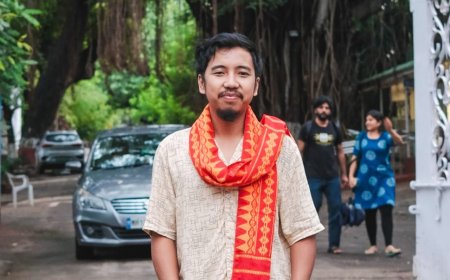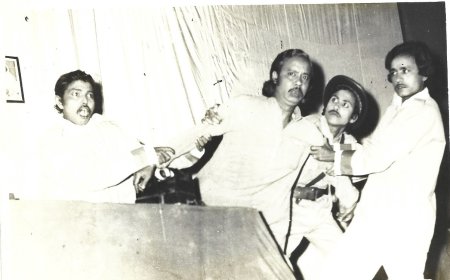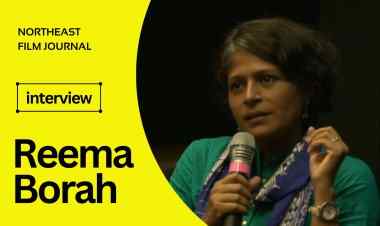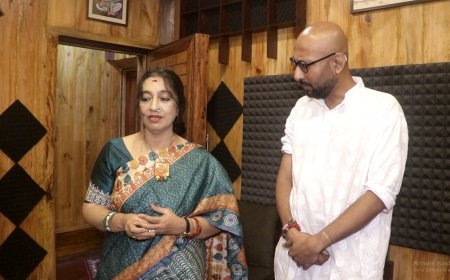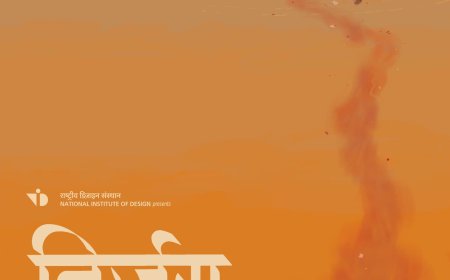SIGNS FESTIVAL: Trans Kashmir (2022)
Trans Kashmir has won the award for the Best Film-Documentary at SIGNS, 2023.
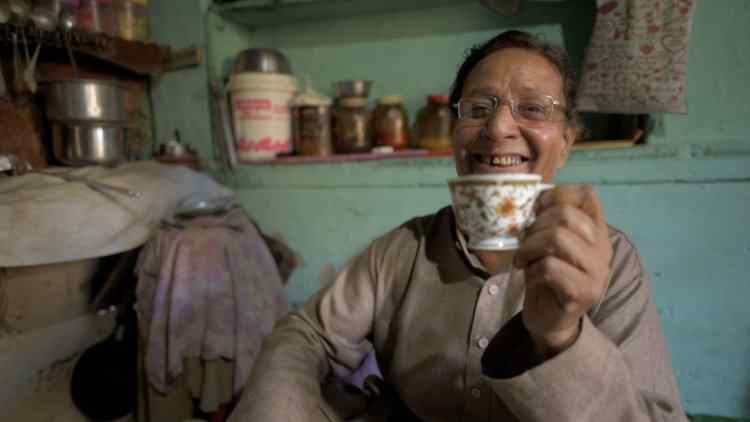
Dipankar Sarkar, noted Indian film critic and an alumnus of FTII, Pune is in conversation with Surbhi Dewan, one of the directors of the documentary, Trans Kashmir.
Directed by Surbhi Dewan and Akmal Hanan, Trans Kashmir raises the curtain on the transgender community in Kashmir. Stressing how their struggle for acceptance, individuality, and the right to dignity is made all the more challenging by the region's ongoing political unrest is carefully captured in this unfeigned feature documentary. The individuals in the community are suffering from a sustainable source of income. Previously, they were earning a livelihood through matchmaking, which has been their traditional job since ages. But now they have lots of competitors in this field too. The narrative structure feels like a synthesis of the individual experiences of the transgender people braided into an engaging and compelling story.
Trans Kashmir has won the award for the Best Film-Documentary at SIGNS, 2023.
In an email interview, one of the directors of the documentary, Surbhi Dewan, shares her experience of making the documentary.
Tell us about your background and how you got involved with documentary filmmaking.
The documentary form combines all the different skills, talents and passions I have had since an early age. While growing up, I was fascinated by technology and thought I would study engineering like my sister. By the end of high school, I knew that was not for me. I also really enjoyed writing and photography. I somehow ended up in Delhi University studying political science. I found documentary films through the film and photography society in my college and I never looked back. I completed my formal education in 2010 with an MFA in Film (where Akmal was my classmate), and have since been professionally involved with film production - started out as a freelancer, then as a producer and co-owner of a production company. I have also continued to make my own films over the years.
What attracted you to the subject of the documentary?
My initial motivation was to show the people of Kashmir in a new light - to break the monotony in the mainstream narrative about the region. The attraction to the story of the transgender community was that it allowed us to present a fresh perspective of Kashmir. When we first came across the story, we felt that this gender identity was, in a way, parallel to the region’s in-betweenness. The ongoing legal case was emblematic of a transition taking place, which we thought would be interesting to follow. During our research, we found the community members and the activists leading the movement to be articulate and earnest people - this is important for an audio-visual medium. We knew there was something special here - a compelling, complex and unexpected story of Kashmir.
How did both of you distribute your roles and responsibilities in making this documentary?
Initially, our roles were clearly demarcated wherein I was going to produce the film while Akmal was going to direct it. There were a few creative and logistical reasons why I had to join Akmal in directing the film as well. We were working remotely through most of the three years that we took to make this film. There were a lot of external challenges during this time (abrogation of Article 370, COVID-19 related Pandemic). Our’s was more like a partnership, where we supported each other however we could, in service of the film.
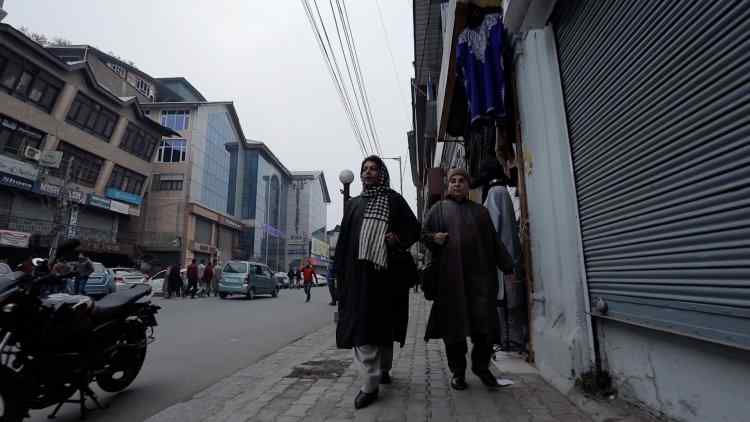
Image: film still
How did you convince the various characters to speak about the trials and tribulations of their lives in front of the camera?
Getting the characters to open up in front of the camera was not a challenge here. Most of them were already familiar with the process since they had experience in being interviewed by local media outlets. In our case, the conversations just went on longer and covered more ground.
For one of the characters, I had to do off-camera conversations to ensure that they were comfortable and also fully on board. As an outsider, I had greater curiosity and many naive questions about their lives, to which they were very responsive.
What was the purpose of using the animated visual at different intervals of the documentary?
The animated intervals are markers of passage of time. They carry information which takes the story forward. While the viewer is immersed in the lives of individual characters, the animated visual intervals are meant to be a reminder of the larger world around them and its impact on their lives.
Most of the interviews are conducted in the interior, and we follow some of them through the alleys of their neighbourhood. The beautiful, serene, and evocative locations for which Srinagar is famous are only visible in the first few minutes of the documentary.
This community’s public mobility is restricted in invisible ways, like unsaid rules. Our film naturally follows their mobility patterns. The beautiful Dal Lake and shots of the valley are just meant to be a reference point for the viewer. Once the place is established, then we hold your hand and take you to the by-lanes and bedrooms of real people. This was an organic decision which came out of a need to explore the world that the characters inhabit. We filmed in an empty Lal Chowk area on a shutdown day because our characters complained about how, due to regular city shutdowns, they struggle to move around and carry out livelihood activities.
Interviews with the members of the family of the trans characters would have provided an interesting perspective regarding their deep-seated discrimination and hatred towards a member of their clan. Share your thoughts.
The idea of interviewing biological families was definitely discussed, especially because two of our main characters, Babloo and Reshma, lived with their biological families, in their family homes in Srinagar. They were protective of their families and didn’t want them on camera. The only family member we see in the film is Babloo’s sister-in-law. With the other characters, the relationships with biological families are more precarious, which is why we stayed away from it.
There are multiple characters in the film. So, during the edit, was it a difficult choice to emphasize which aspects of a particular character should get more importance than others?
It took many iterations over many months to finally get the right balance and flow in the edit. The choices were more instinct-based and our aim was to achieve a desired emotional arc of the story. Based on an overwhelmingly positive response to the film across the board, it seems like we succeeded in getting the ingredients just right during the edit. Keeping the gravity of the situation intact, we wanted viewers to be charmed and amused by the characters. At every screening, it gives us so much joy to hear the audience members get surprised at themselves for laughing during the film.
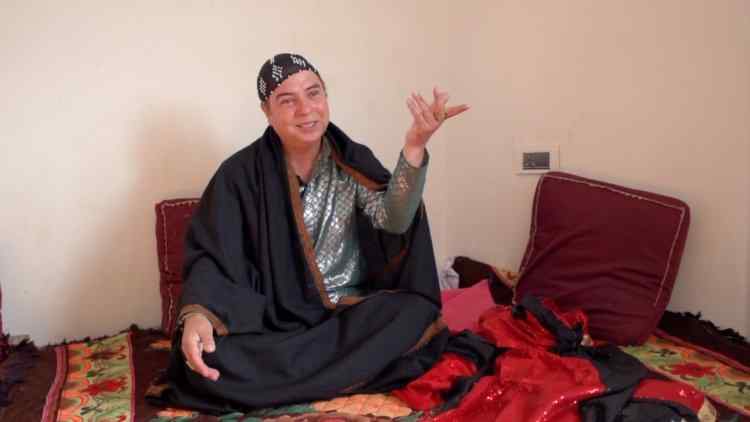
Image: film still
Do you think that an emotionally powerful and socially relevant documentary like Trans Kashmir will alter the rigid mindset of most of the individuals in our society?
I am not here to change anyone’s mindset. My only hope with all my films is to bring the ‘other’ a bit closer to you; make the unfamiliar a bit more accessible. I want to test and challenge the limits of your world-view by humanizing what seems foreign to you. This, in my view, is a worthy endeavour and, going forward, I hope to continue to do this on a larger scale.
***
What's Your Reaction?




































